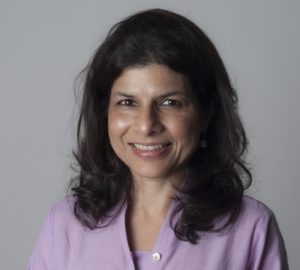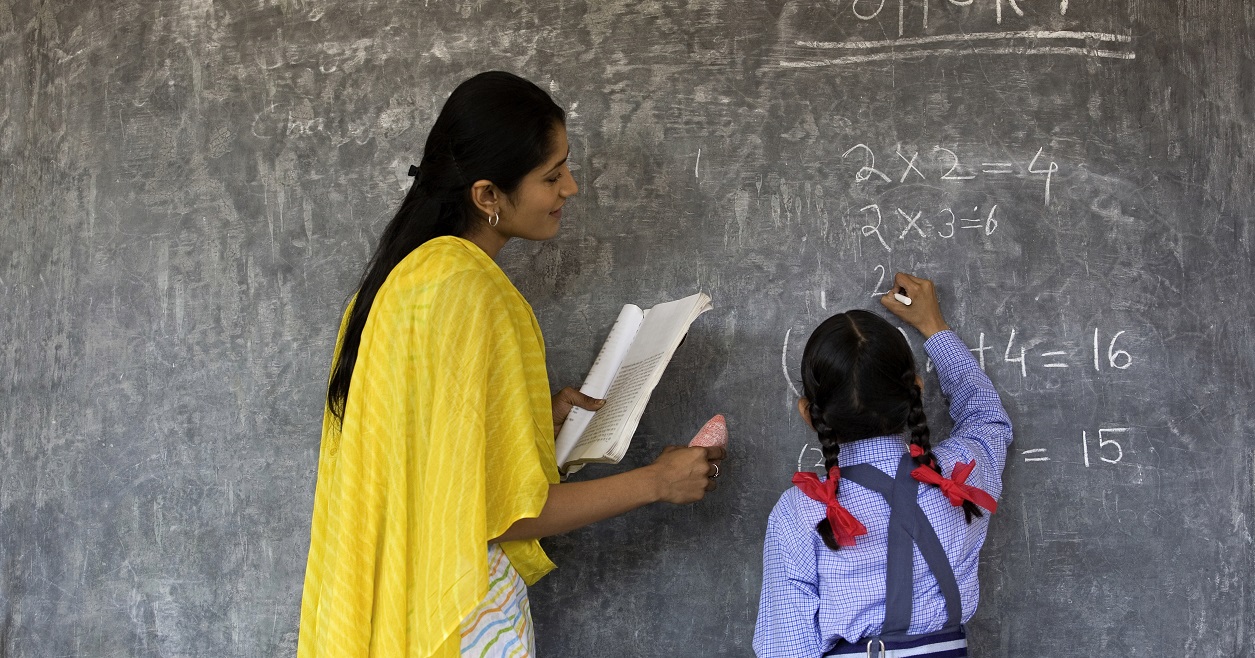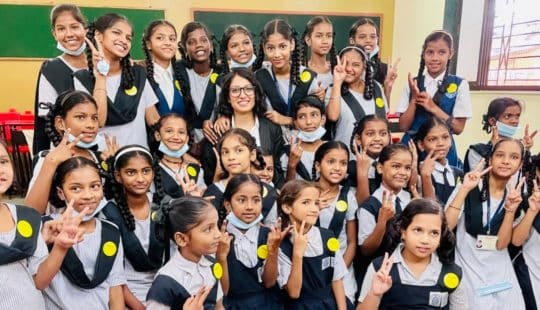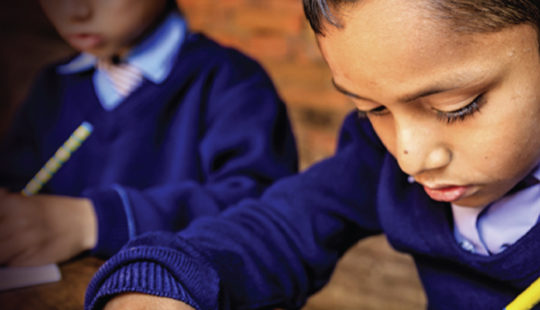SAP India’s Code Unnati joined hands with Project Nanhi Kali in 2019 to provide quality education and digital access to underprivileged girl children. Code Unnati, SAP’s flagship initiative, equips youth and children with quality STEM (Science, Technology, Engineering and Mathematics) education and Digital Literacy.
On the occasion of World Youth Skills Day celebrated on 15th July; Gunjan Patel, Regional Director of CSR, SAP India catches up with Sheetal Mehta, Senior Vice President – Corporate Social Responsibility, Mahindra Group to discuss Nanhi Kali and SAP’s partnership with the programme. The World Youth Skills Day is celebrated to encourage youth to acquire skills so as to enhance their ability to better choices and improving their employment prospects.

Gunjan and Sheetal talk about how such an initiative is propelling gender equality and quality education for vulnerable and socio-economically disadvantaged girls. Peppered with real stories are also overarching statistics of Project Nanhi Kali. The conversation meanders on how private partnerships like Code Unnati with Project Nanhi Kali further enhance the digital learning platform for improving digital inclusion.
It was Sheetal’s deep passion to be a change maker that made her transition to the K. C. Mahindra Education Trust in 2002, wherein she took over responsibility of heading the K. C. Mahindra Education Trust and its flagship girl education initiative, Project Nanhi Kali.
Sheetal is also a Trustee & Executive Director of K. C. Mahindra Education Trust (KCMET) and Mahindra Foundation. Her other positions include being the President, Mahindra Foundation USA, Director, Mahindra Foundation UK, Trustee, Mahindra International School Academy, and President, Mahindra Education Society.
Gunjan: Can you briefly highlight the project Nanhi Kali?
Sheetal: Nanhi Kali is a pan-India initiative which supports girls from underprivileged families, primarily through the route of education. Anand Mahindra, Chairman of the Mahindra Group, started Nanhi Kali in 1996 with the belief that educated girls would contribute not only to the economic development of the country but also lay the foundation for a more just and equal society. Studies show that investment in girls’ education has a transformational impact on their earnings, improved nutrition, reduction in child & maternal mortality and standard of living and improved social capital.
Nanhi Kali provides girls with daily afterschool academic support through centers which operate within government schools across India. Every girl is provided with access to a personalized, adaptive learning software, pre-loaded on digital tablets. The AI powered software assesses the learning level of each individual girl and then matches instructions to her level. This collaborative innovative EdTech solution is particularly helpful in remote locations in overcoming challenges such as the lack of qualified tutors and a pervasive digital divide.
The intervention at Nanhi Kali is not restricted to mere academic support but is more holistic, bearing in mind the dignity of the girl child. Hence, every girl receives a material kit comprising of a school bag, stationery, pullover, raincoat, and feminine hygiene material to enable her to attend school with self-esteem. The project also promotes overall development through a professionally designed sports curriculum integrated into the intervention. Moreover, Nanhi Kali’s on-ground operations are managed by an army of women tutors who are recruited from local communities and trained to become learning facilitators and mentors to the girls. Through sustained engagement with the families of the girls and community stakeholders, the Nanhi Kali team ensures gender sensitization of communities and creates girl-friendly eco-systems.
Aligned with UN Sustainable Development Goals 4 – Quality Education & Goal 5- Gender Equality, Nanhi Kali affirms that every girl is given the opportunity to learn and achieve her full potential.
Nanhi Kali project is jointly managed by K.C. Mahindra Education Trust and Naandi Foundation
Gunjan: Can you describe the situation of girls’ education esp. for socio-economically disadvantaged and vulnerable sections of society?
Sheetal: Ensuring gender parity has been globally recognized as key to enhancing social and economic growth. However, many parts of India continue to show poor social indicators for girls including a skewed child sex ratio, low female literacy levels, regressive gender biases and patriarchal social norms such as child marriage. In the context of poverty, these systemic gender inequalities are exacerbated, increasing the likelihood of girls being denied access to education. Owing to the numerous socio-cultural barriers, many girls are compelled to drop out of secondary school due to household chores and sibling care; they could even be forced into early marriage or child labor.
While India has made progress in universalizing access to primary education, the quality of education, especially in rural areas, continues to be a challenge. In low resource settings, the quality of education is impacted by teacher absenteeism, multi-grade classrooms, high student-teacher ratio, and low student learning levels. Annual surveys have revealed that year after year, over 56% of students in Grade 8 are unable to solve a simple math problem and over 27% are unable to read Grade 2 level text. The situation is worse for girls as they do not have the luxury of time or space to study at home, given that the responsibility of household chores like cooking and cleaning falls on their shoulders, which is not so for their brothers.
Thus, girls from disadvantaged communities have the odds stacked against them for a complete and successful schooling experience. Through our constant interactions with community stakeholders including parents, education officials, government school authorities and local opinion leaders, Nanhi Kali ensures that girls continue to attend school regularly and complete their schooling.
Gunjan: How has COVID19 pandemic and ensuing restrictions impacted the education scenarios for these girls?
Sheetal: School closures caused by the COVID-19 pandemic have widened pre-existing gender gaps in access to education, disproportionately impacting girls from vulnerable families. Movement restrictions and lockdowns imply lock downs on girls’ autonomy, reinforcing the discriminatory attitudes and practices that regard girls as second-class citizens and hold them back. Further, Indian parents of adolescent girls will be particularly hesitant to send their girls back to school, exacerbating the already high school dropout rate for girls, and increasing the risk of exploitation, and early and forced marriage.
The negative consequences of this gender divide are aggravated by the pervasive digital divide in India. Poor families have limited resources to connect digitally. The crisis threatens to undo years of progress that have collectively been made in girls’ education. While girls may not be the face of this pandemic, we understand that they risk being amongst its biggest victims. It is crucial today, more than ever before, for girls to have access to quality education and digital access can enable it.
Gunjan: What according to you are the solutions or suggestions to improve the opportunities for affordable quality education especially at the scale commensurate to the country of the size of India?
Sheetal: I believe that technology can play a pivotal role in addressing multiple challenges in providing equal access to quality education for all. Customized innovative digital solutions work effectively in low resource settings and mitigate learning challenges such as diverse student learning levels and lack of qualified tutors would be effective in improving access to quality education. More so, through the COVID-19 crisis, we have learned how vitally important it is for smart technology and digital learning to be embedded into our education system. Given that 65% of students in India attend government schools, and most of these schools do not have the necessary hardware or connectivity to support online learning, there is a requirement to invest in this infrastructure to enable all students to benefit from digital education.
Additionally, there is a need to develop training programs which will equip teachers to effectively deliver this technology driven education. While technology will enhance learning outcomes, it cannot be considered a substitute for a teacher in a child’s education journey. A blended approach which combines digital learning and teacher interactions in the classroom would be the ideal solution to strengthen the quality of education in India and enhance access to education at scale.
Gunjan: What role private sectors can play in providing quality education? Can you share any case study of such initiative or collaboration?
Sheetal: Private sector organisations play an important role in supporting innovative solutions aimed at improving access to quality education and complementing the Government education systems. For instance, Nanhi Kali’s afterschool intervention, where girls in government schools receive personalised instructions through an AI powered digital learning platform, ensures that girls have a meaningful learning experience. This in turn, improves learning outcomes and contributes to high attendance and retention rates for girls.
The Nanhi Kali – SAP partnership, which supports the education of over 12,000 underprivileged girls, is an excellent example of the impact that corporate collaborations can have in creating positive social change. It was through the collaboration with SAP that Nanhi Kali was able to enter the state of Karnataka to set up a new project in the high-need district of Raichur.
Gunjan: How would you redefine youth in India?
Despite decades of progressive economic reforms, a large section of India’s youth from underprivileged backgrounds remain underequipped to share in the gains arising from such growth. Often lacking access to necessities such as quality education and skill training, the much touted ‘demographic dividend’ of India risks becoming a liability for the nation. Confronted with a multiplicity of challenges in their social and economic lives, there is a need to invest in building the capacities of India’s youth. Skilling is increasingly becoming a priority development agenda for the Government of India, as a result of which youth now have a variety of options of new skills that they can equip themselves with, including 21st century skills. While it is essential to provide youth with opportunities to acquire employable skills, I believe it is equally necessary to help youth develop life-skills, self-belief, and confidence to become active participants in the formal workforce. This becomes even more significant in the case of girls and young women whose belief in themselves is often inhibited due to entrenched discrimination and dominating patriarchal mindsets, which present barriers to their participation in economic life.
With the right balance of quality education, skills, empathy, trust and confidence, the youth of India will be able to unleash its potential to build an economically stronger and more equitable nation.



